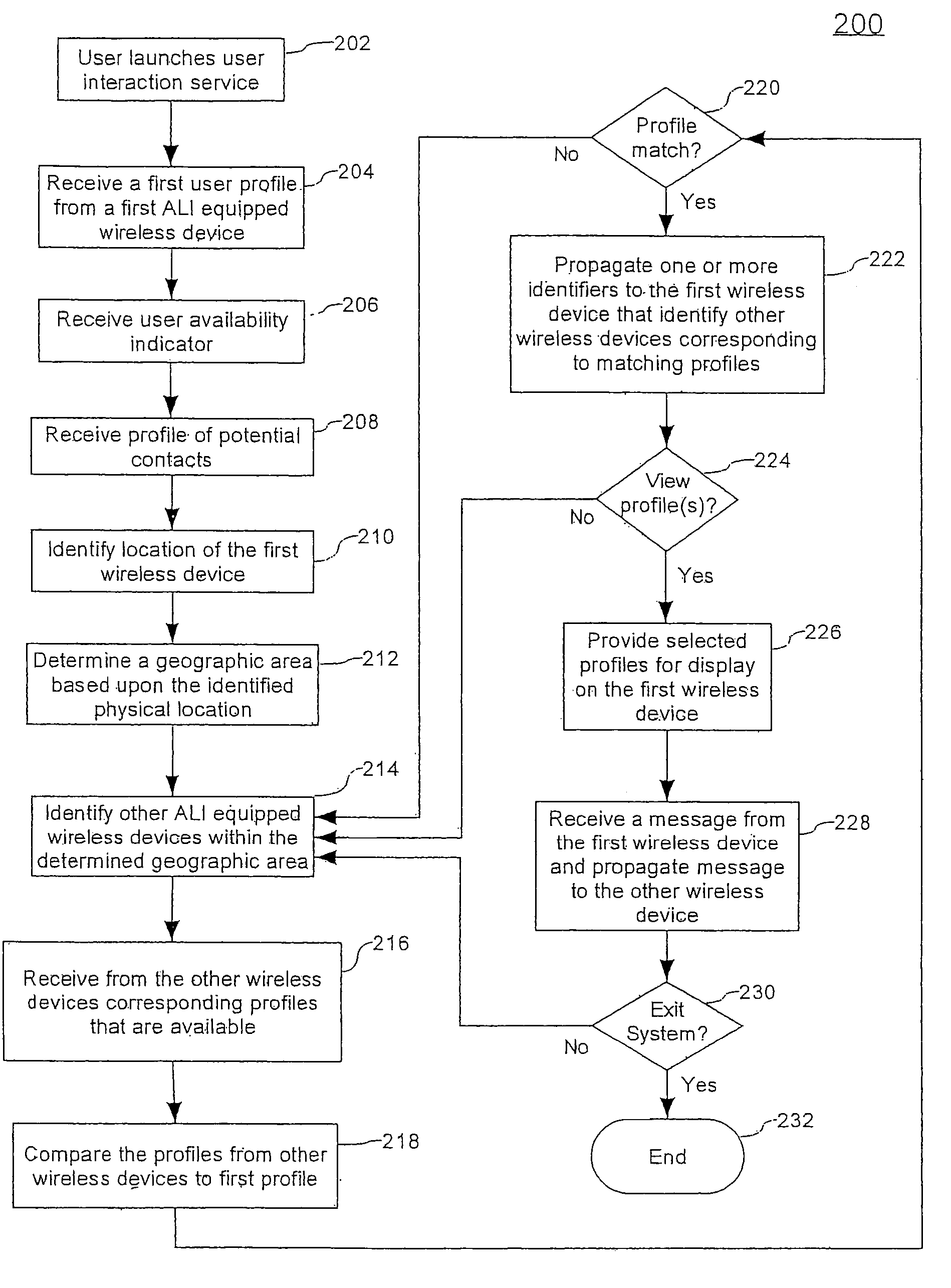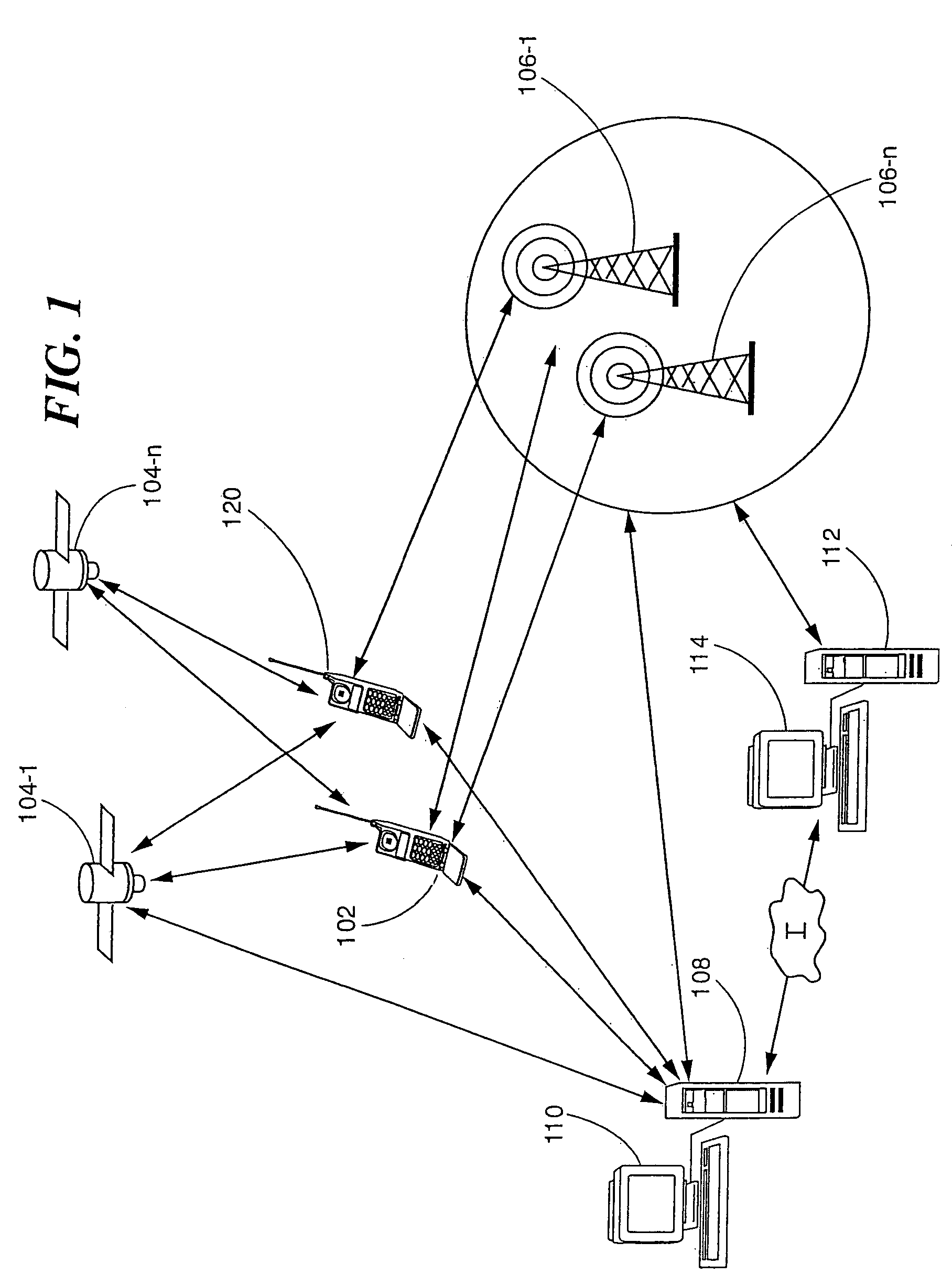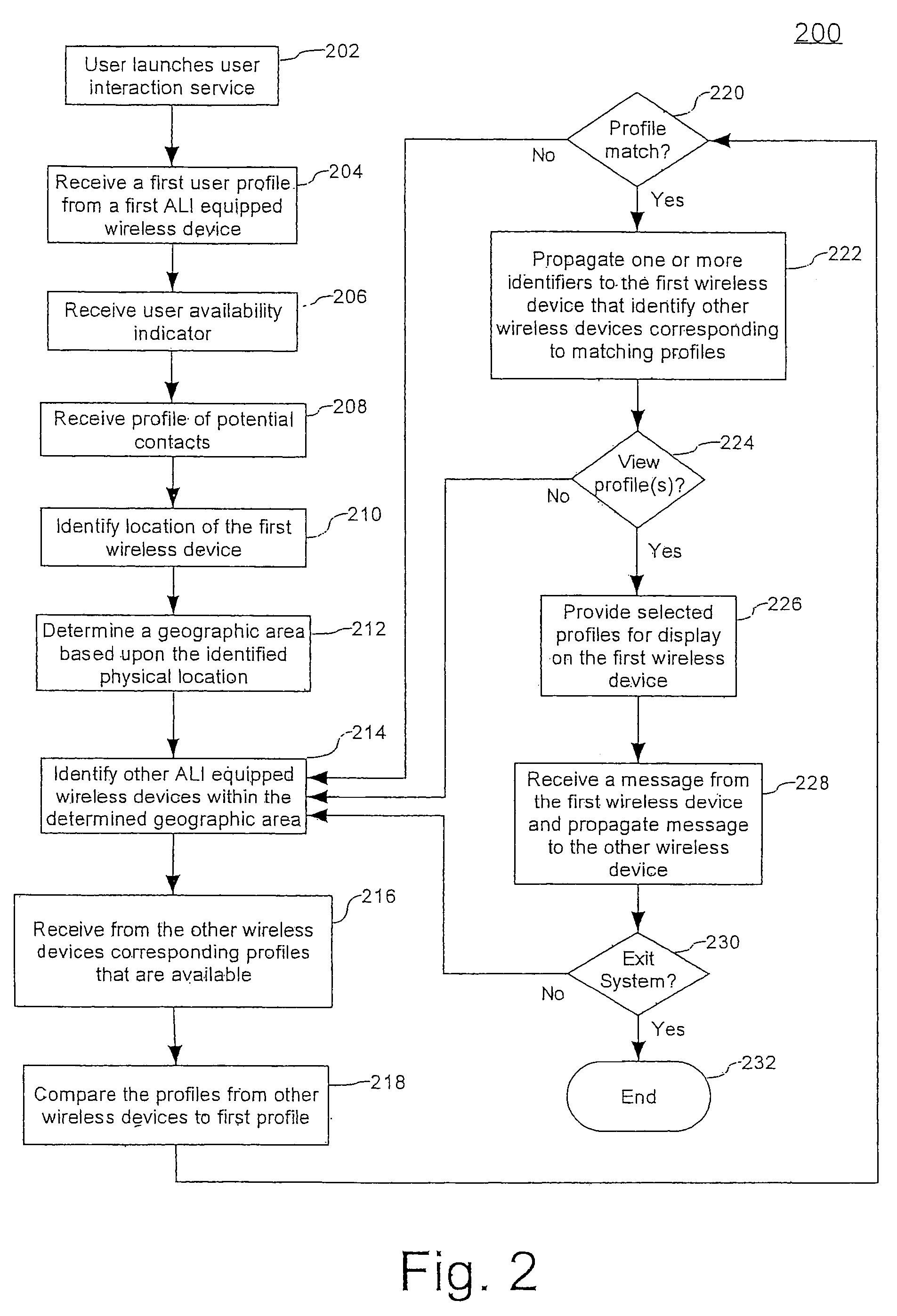System and method for exchange of geographic location and user profiles over a wireless network
a wireless network and user profile technology, applied in the field of wireless devices, can solve problems such as infrastructure costs and availability of base stations
- Summary
- Abstract
- Description
- Claims
- Application Information
AI Technical Summary
Benefits of technology
Problems solved by technology
Method used
Image
Examples
Embodiment Construction
[0024]The present invention relates to a method that facilitates the introduction of people using wireless communication devices, for instance mobile telephones. Moreover, the present invention also facilitates communication between pools of users having matching profiles. In particular, a user profile can be received from a first wireless device user and the location of the wireless device can be determined using an automatic location identification (ALI) system. The user profile can be compared to profiles of other wireless device users within the same geographic region as the first user, or other users within a user selected geographic region. A listing of users having matching profiles then can be presented to the first user, for example on the display of the wireless device. The first user then can contact other users selected from the list, for instance using text messaging or by placing a voice call. Individuals within a profile group also can select a privacy feature which b...
PUM
 Login to View More
Login to View More Abstract
Description
Claims
Application Information
 Login to View More
Login to View More - R&D
- Intellectual Property
- Life Sciences
- Materials
- Tech Scout
- Unparalleled Data Quality
- Higher Quality Content
- 60% Fewer Hallucinations
Browse by: Latest US Patents, China's latest patents, Technical Efficacy Thesaurus, Application Domain, Technology Topic, Popular Technical Reports.
© 2025 PatSnap. All rights reserved.Legal|Privacy policy|Modern Slavery Act Transparency Statement|Sitemap|About US| Contact US: help@patsnap.com



